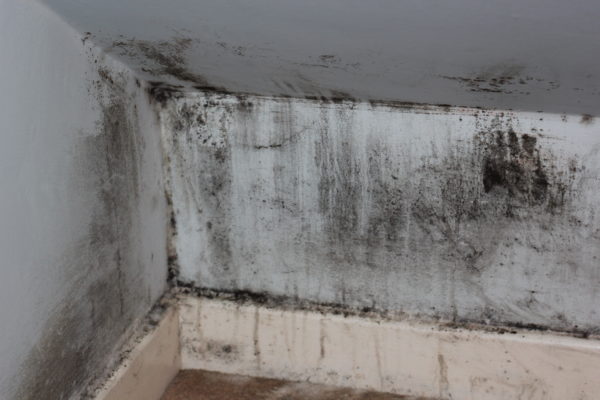Table Of Content
- How Dangerous is Black Mold?
- Could You Afford a Vacation Home in Portugal? Check Out the Prices in These 7 Cities
- Termite Damage vs. Wood Rot: How To Know What’s Eating Your Home
- A mold remediation service can take care of any mold growth that has spread beyond air vents to the rest of the home.
- Need Help With Mold Removal Or Forensic Cleanup?
- Your Paint Or Wallpaper Started Peeling

Carpets that are contaminated with mold can be a health hazard. Mold can grow in the fibers of carpets that are exposed to moisture, and this can result in a musty odor and other health issues. In most cases, it is not possible or desirable to sterilize an area; a background level of mold spores will remain - these spores will not grow if the moisture problem has been resolved.
NHS explains health problems caused by damp and mould in your home and what you can do about it - Chronicle Live
NHS explains health problems caused by damp and mould in your home and what you can do about it.
Posted: Sun, 08 Oct 2023 07:00:00 GMT [source]
How Dangerous is Black Mold?
They will be able to help you figure out which allergens cause you problems so you know the things to avoid. They will also help you develop a plan to manage your allergies or asthma. Mold grows in dark, damp places, like basements, around sinks, roofs, windows, and areas with standing water. The most common indoor molds are Cladosporium, Penicillium, and Aspergillus. Additionally, Nearby says the air vents in the ceiling or floors may have rust or black spots, indicative of high moisture in the air system, which usually causes mold growth.
Could You Afford a Vacation Home in Portugal? Check Out the Prices in These 7 Cities
Indoors, mold can be found on wood, sheetrock, insulation, grout, wallpaper, and even places like windows, showers, and sinks. Mold also can grow in carpet and on/in upholstered furniture. Outside, it’s common to find mold or mildew on plants, rocks, soil, and on any decaying or dead matter—as long as moisture is present for its growth. Mold grows when the moisture levels are high, sunlight is minimal, and temperatures fall into an optimal range.
Termite Damage vs. Wood Rot: How To Know What’s Eating Your Home
Even mild peeling or bubbling should be taken seriously, especially if you also have any of the other signs of mold in your home. Especially if you have the symptoms of a persistent cold, feeling better when you leave home is a pretty good sign that there might be mold in your house. This is a good indicator because your home is supposed to be where you’re most comfortable and relaxed. If you leave and your cold symptoms, headache, or fatigue immediately go away, chances are something in your home was making you feel that way.
However, in people with allergies and asthma, they may cause allergy symptoms and asthma attacks. More rarely, some people may develop flu-like symptoms after inhaling the allergen. These symptoms may be due to hypersensitivity pneumonitis, ABPA, or fungal infection.
Mold allergy symptoms vary from person to person and range from mild to severe. You might have year-round symptoms or symptoms that flare up only during certain times of the year. You might notice symptoms when the weather is damp or when you're in indoor or outdoor spaces that have high concentrations of mold. Mold spores are always found in the air we breathe, but extensive mold contamination may cause health problems. Molds, like most fungi, break down plant and animal matter in the environment. They can grow almost anywhere there is moisture and organic material such as in soil, on foods and plants, and in people's homes.
Black Mold
The key to preventing mold growth is to identify and control moisture and water problems. Mold spores are everywhere, including your home, and they can grow on any surface that has sufficient moisture. An allergic reaction can occur when you touch mold or breathe in mold spores, which can cause typical hay fever (allergic rhinitis) symptoms. This can happen right away, or you can have a delayed reaction. Fungus thrives in moist environments, and water damage can quickly result in mold growth, which can cause both structural damage to your home and costly repairs.
Studies indicate that exposure to molds in the workplace can make pre-existing asthma worse. NIOSH investigates associations between damp buildings and developing new asthma. People with allergies or asthma could have respiratory problems triggered by mycotoxin, a toxic compound produced by certain types of mold. Do you experience coughing, sneezing, feeling tired, or having a runny nose regardless of the season? Maybe you need to check if there’s mold growth in your house.
'May be concealed': Four early signs of mould in your bedroom - how to control it - Express
'May be concealed': Four early signs of mould in your bedroom - how to control it.
Posted: Sun, 13 Nov 2022 08:00:00 GMT [source]
Your Paint Or Wallpaper Started Peeling
It’s always important to be especially vigilant when it comes to mold for the weeks and months after a water damage event. As long as the mold is still there it will release spores and grow. Next, see if there’s any way you can reduce the humidity or increase airflow in the rooms that develop dark grout. Unfortunately, it’s difficult to tell what kind of mold you’re dealing with from a musty smell alone. It could be harmless, or it could be a more dangerous black mold.
A visual inspection of your basement, living area, and attic should be part of a routine to avoid mold growth. Growing up I remember seeing mold in my bathroom and near windows. At the time I didn’t realize it but the fungus was affecting the quality of my life.
House mold thrives in wet, humid environments like bathrooms, basements, and areas that have recently flooded. Hard rains occur seasonally in much of the U.S. and occasionally there is flooding. In recent years places like New Orleans and Houston have experienced flooding, costing homeowners millions of dollars. Many molds found in the house can be seen and easily cleaned.

Dry laundry promptly and use indoor drying racks/lines minimally. Workers may be able to identify related exposures by frequently measuring lung function. Measuring should occur several times a day at work and at home over several weeks. These symptoms usually first appear 2 to 9 hours after exposure and last for 1 to 3 days. Other affected persons have progressive shortness of breath and cough, as well as weight loss.
To keep your bathtub and walls from becoming discolored, make sure to use a squeegee after each shower or bath. It’s also important not to let wet towels and clothes linger in the hamper for too long – dispose of them as soon as possible. Be mindful of any signs that indicate the shower curtain needs cleaning, such as discoloration. There are very few reports that toxigenic molds found inside homes can cause unique or rare health conditions such as pulmonary hemorrhage or memory loss. These case reports are rare, and a causal link between the presence of the toxigenic mold and these conditions has not been proven.
That’s why it is crucial to understand the signs of mold in your house. In this article, you will find 11 signs that your home may have mold and how to treat it if it does. On the other hand, there’s no evidence to show that mycotoxins in the air from black mold cause disease. Keeping clear of mold is the best way to prevent it from triggering your asthma or allergies. When you can’t avoid it, treatment can help manage your symptoms.
With ABPA, you may experience a cough with bloody mucus, fever, and weakness. Abate recommends having the air in your home analyzed by an air-quality professional if you suspect that you have mold. Similar to your clothing and flooring, your home's furniture can also attract mold and mildew. But by routinely examining the state of your furniture (especially the fibers), you're sure to catch any stains, discoloration, or fuzz indicating mold is breeding.

No comments:
Post a Comment